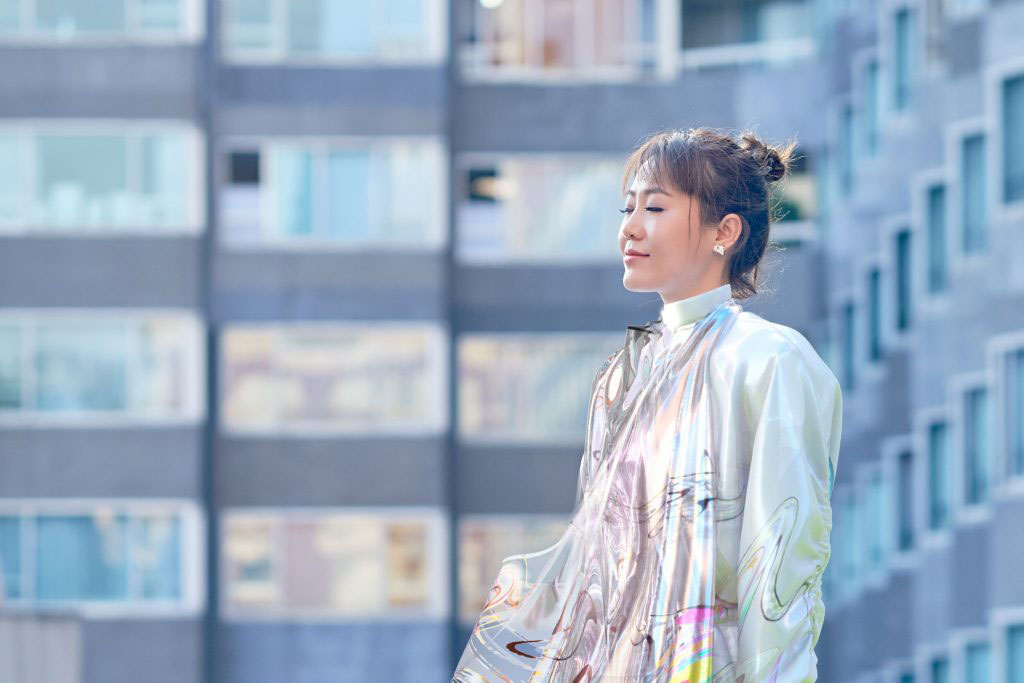
I first heard about NFTs when I was assigned to coach an entrepreneurship project at Said Business School. It prompted me to do more research on the topic, and while it was still very new, it wasn’t long before Christie’s made history by selling digital art for $9 million. Lately, it seems that each day brings a new story about NFTs, and the fashion and luxury worlds have been warming up to the concept and showing signs of exploiting it further. While questions remain in abundance, it’s only a matter of time before we see a luxury group launching a marketplace of NFTs, where one may become the sole owner of a digital fashion item.
There’s a curious dichotomy in the relationship between NFTs and fashion: consider that with NFTs, one can never own the actual product; at the same time, there’s the fact that consumers buy fashion and luxury items in order to show them off. Thus, NFTs and fashion present a complete paradox.
Yet this is also the very nature of the fashion industry: it is built on paradoxes. For example, although many criticize the fashion industry for oppressing and manipulating women, it is equally true that it remains a field in which many women have risen to become powerful and successful entrepreneurs, even at a time when it was particularly challenging for them to do so. Also paradoxically, the fashion industry is all about newness, but at the same time it is rooted in and reliant upon the past, not only for its brand awareness but also for its values and techniques of craftsmanship and skill. It advocates sustainability, yet it is one of the world’s worst industries when it comes to pollution, where seasonality and constant production and consumption is encouraged. It advocates individuality and uniqueness, but also creates a homogeneous society by informing us how we should dress. Given that these paradoxes are an inherent part of the industry, it should come as no surprise that it’s only a matter of time before we see digital ownership of fashion items really take off.
Marketplace for NFTs:
Currently, what we see in the industry is that one can buy NFTs and showcase one’s fashions in virtual video games. These are not precisely what we would call luxury branded goods, but rather non-branded GIFs. As reported recently in Vogue Business, Neuno, a Sydney-based company, is set to change the nature of marketplaces and NFTs. As Neuno’s CEO explained, the company is currently working with five luxury brands to create the Net-a-Porter of NFTs, and unlike current NFT marketplaces, where anybody can upload and sell an NFT, Neuno only works directly with brands. That way, it aims to ensure a premium user experience, reassuring buyers about authenticity. Customers will be able to buy NFTs with their credit cards, which removes one of the barriers to entry—the necessity of owning cryptocurrency.
In practical terms, this means that if you bought the Gucci coat, designed in collaboration with an artist, or the infamous JLo dress, you should be able to wear it in any digital platform, whether that’s a Zoom meeting or a virtual reality video game. I believe this is going to be one of the ways we will see NFTs and fashion work, and it will be interesting to see how it’s going to be regulated. This will also give rise to copyright, royalty and resale restrictions. Rules and regulations will be very important, and it’s an area of fashion law that will need to be explored further.
There are two ways to think of the marketplace: one contains products that are very high end, think Net-a-Porter; and the other one is more Amazon or Asos, where you can buy virtual Gucci sneakers that are a fraction of the price, but of course can only be worn digitally. It will be interesting to see how fashion and luxury brands will respond and approach the marketplace. And it will be equally interesting to see how consumers respond to the concept. Perhaps you don’t have the money to buy a Hermes bag, but will you pay to have the experience of owning one for a fraction of the price in a digital space?
Fashion as Collectible Art:
In my forthcoming book, Fashion Entrepreneurship (to be published at the end of the year), I talk about the art industry as complementary to the fashion industry. In fact, the two industries have been undeniably connected, tracing their parallel developments before revealing how they became intertwined in the 19th century in the city that was at the center of both worlds – Paris.
From the mid-19th century onward, the marriage of art and fashion, and the subsequent cross-fertilization of ideas, has had a profound influence on both, helping the two industries grow and evolve. And just as in the 19th century, the reciprocal influence of the two industries continues to this day. Not only do we see collaborations between artists and fashion and luxury brands, but we also see the correlation when it comes to art, fashion and NFTs. It’s easy to see how NFTs naturally fit with fashion, and in fact, Christie’s and other auction houses are set to keep investing in this sphere.
It makes sense to own the digital rights to a particular piece of art, and perhaps it makes sense to own the digital rights to a particular fashion item even if you are unable to wear it. Just as art is collectable, so is fashion. Quite recently it was announced that Karl Lagerfeld’s photographs (Lagerfeld was an avid photographer and his catalogue includes over 120,000 images) will be released on blockchain with NFTs of Lagerfeld clothing likely to follow. Similar possibilities for other fashion brands might include a designer sketch, or a collaboration between a designer and an artist but in the digital sphere.
Differentiation Factor:
The trailblazing companies that initially market NFTs will have the first mover advantage, and also differentiate themselves further in the industry. Since it’s such a competitive industry, where newness and awareness of change (cultural change in particular) is important, it will be imperative for fashion and luxury brands to make use of NFTs in a clever way. If you are a newcomer, it is also an opportunity for you to establish and distinguish yourself from the existing players in the industry. More importantly, luxury and fashion brands could go beyond their existing offering and create a line that would be impossible to create in real life. That’s where fashion and luxury brands could really capitalize on what makes them unique and creative—by possibly creating a line that is only available as an NFT, and sold virtually.
Authentication and Traceability:
NFTs function via blockchain technology and this capability facilitates authentication and traceability, which is of value in the fight against counterfeit, copy-cat luxury fashion. Some luxury and fashion houses have already begun working on this issue. Prada, LVMH, and Richemont, for example, have all collaborated on a blockchain consortium that enables traceability of their products.
I personally believe we are seeing the tip of the iceberg when it comes to digitalization and fashion. I look at my son, who is only two at the moment, and wonder what the future will hold for the next generation, and how fashion will be used and worn in generations to come. Because if we look about, all around us we are witnessing rapidly changing business models. For example, over the course of a few months the gym where I used to work out in Paris has closed its doors and gone completely online. A pizza restaurant across the street from us is now delivery only. These changes have happened everywhere; in the blink of an eye businesses were forced to move online even though this had been unthinkable even a few months ago. In short, businesses have had to adapt to digitalization and completely rethink their business models, and it is no different for the fashion and luxury industries.
To read more on this topic, see my previous article on NFTs.





